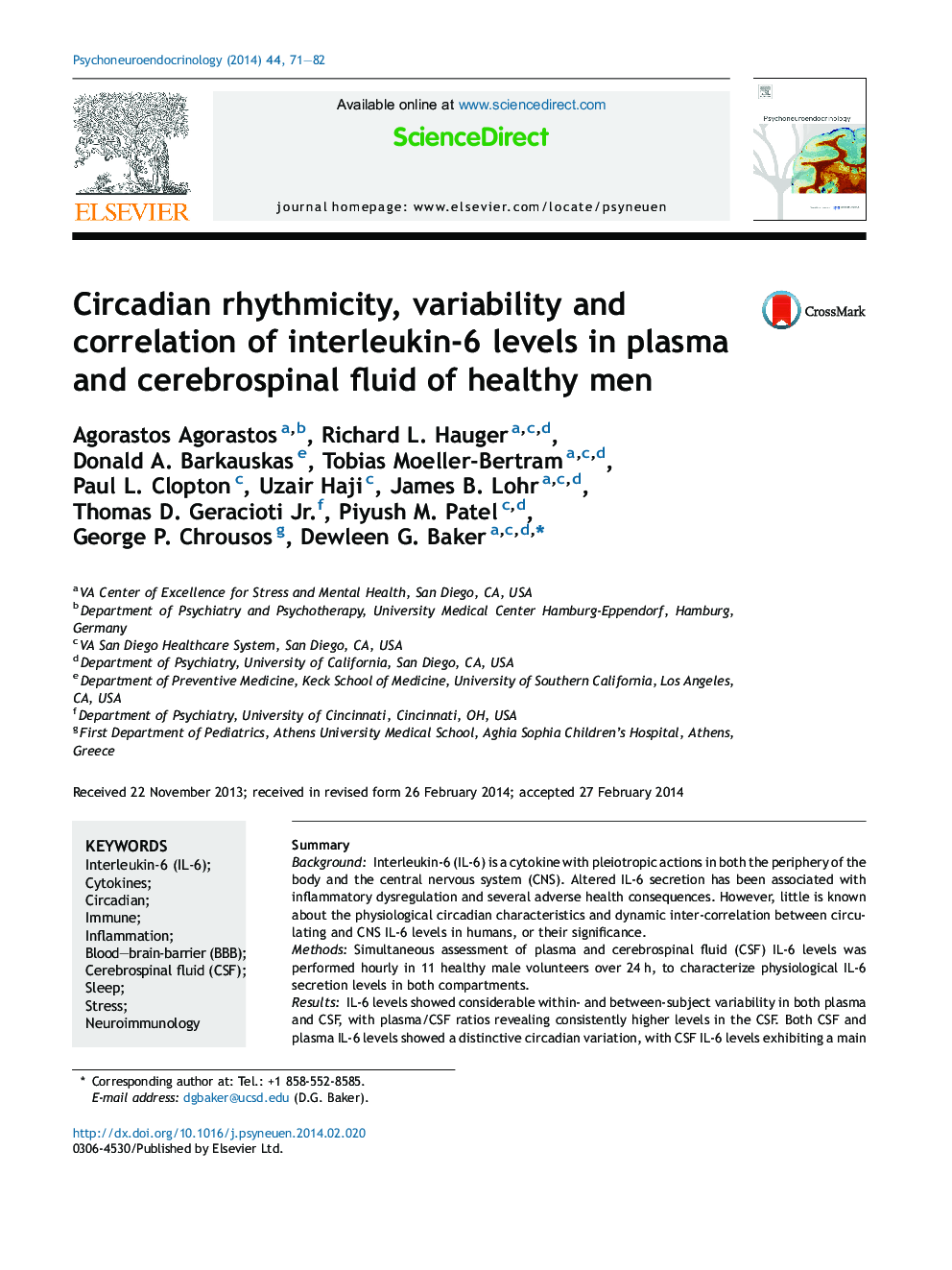| Article ID | Journal | Published Year | Pages | File Type |
|---|---|---|---|---|
| 335674 | Psychoneuroendocrinology | 2014 | 12 Pages |
SummaryBackgroundInterleukin-6 (IL-6) is a cytokine with pleiotropic actions in both the periphery of the body and the central nervous system (CNS). Altered IL-6 secretion has been associated with inflammatory dysregulation and several adverse health consequences. However, little is known about the physiological circadian characteristics and dynamic inter-correlation between circulating and CNS IL-6 levels in humans, or their significance.MethodsSimultaneous assessment of plasma and cerebrospinal fluid (CSF) IL-6 levels was performed hourly in 11 healthy male volunteers over 24 h, to characterize physiological IL-6 secretion levels in both compartments.ResultsIL-6 levels showed considerable within- and between-subject variability in both plasma and CSF, with plasma/CSF ratios revealing consistently higher levels in the CSF. Both CSF and plasma IL-6 levels showed a distinctive circadian variation, with CSF IL-6 levels exhibiting a main 24 h, and plasma a biphasic 12 h, circadian component. Plasma peaks were roughly at 4 p.m. and 4 a.m., while the CSF peak was at around 7 p.m. There was no correlation between coincident CSF and plasma IL-6 values, but evidence for significant correlations at a negative 7–8 h time lag.ConclusionsThis study provides evidence in humans for a circadian IL-6 rhythm in CSF and confirms prior observations reporting a plasma biphasic circadian pattern. Our results indicate differential IL-6 regulation across the two compartments and are consistent with local production of IL-6 in the CNS. Possible physiological significance is discussed and implications for further research are highlighted.
